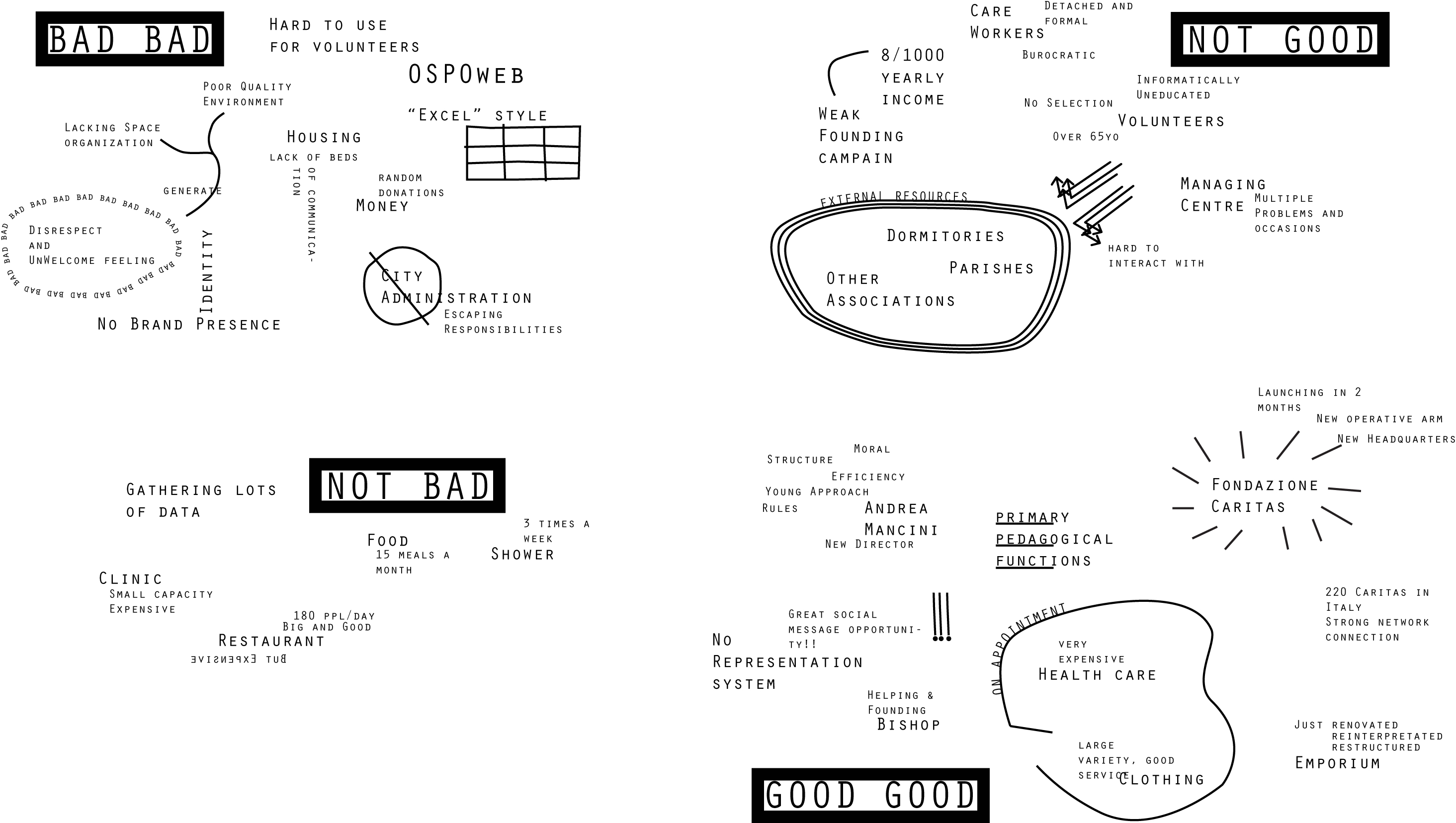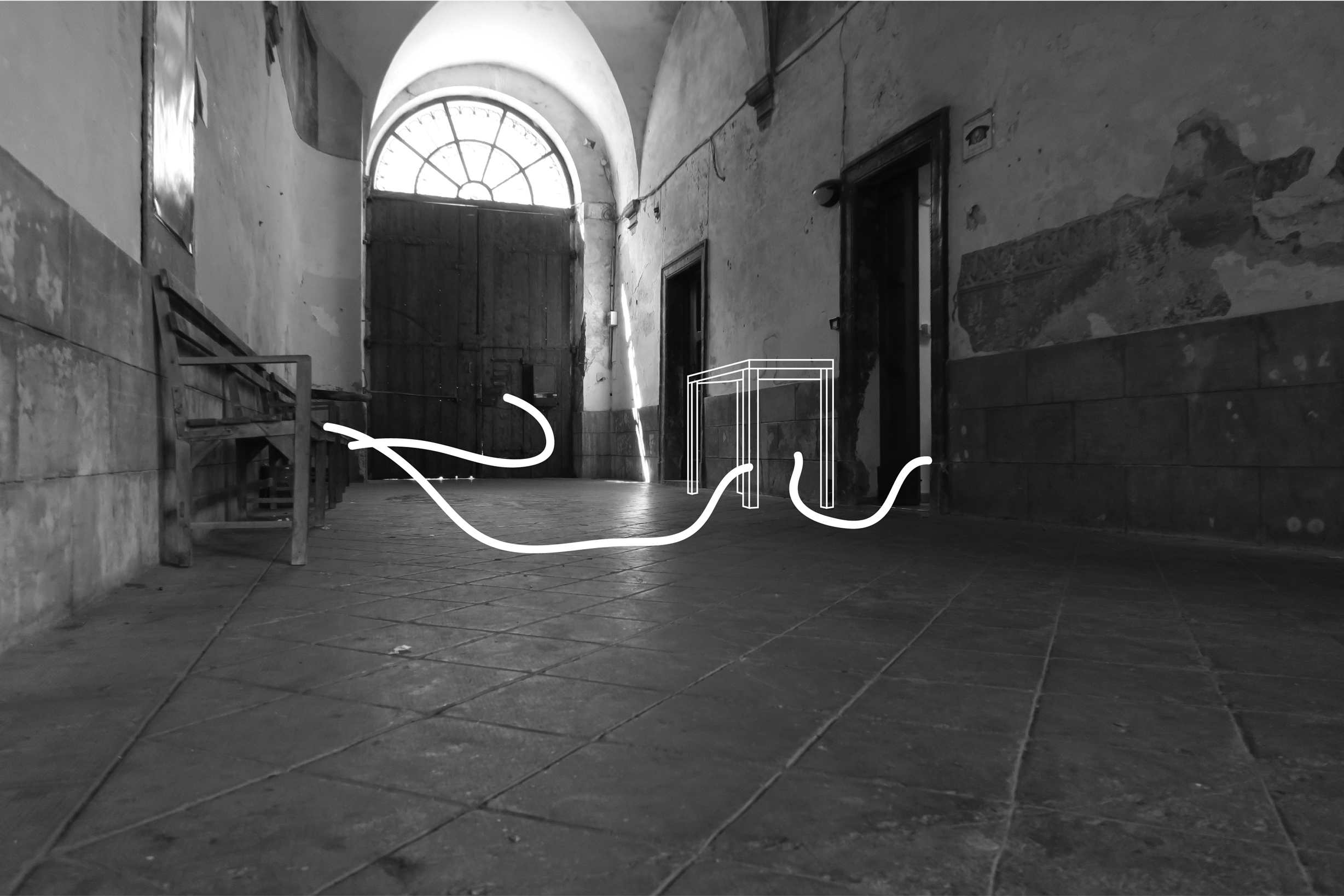The Caritas Project
February, 2017
Community Engagement, Placemaking, Branding
Caritas Pesaro is a branch of Caritas Italiana, a Catholic charity organisation of global reach and present in Italy in 220 centres. I had the opportunity to collaborate with them on the reorganization of their Managing Centre and the redesign of their local brand identity.
The approach of Caritas is centred around building relationships between the volunteers and the people in need. They define their mission as “pedagogical”: by creating a “path together”, metaphorically conducted by both the volunteers and the visitors, they hope to create value for both these figures. Everything starts with a relationship, a conversation and a trajectory.
Their ecosystem is formed by different institutions, supplying a variety of services and goods. This complex landscape is visualised in my knowledge map, where Caritas’ stakeholders and assets are intertwined, and future possibilities emerge from these connections.
Their ecosystem is formed by different institutions, supplying a variety of services and goods. This complex landscape is visualised in my knowledge map, where Caritas’ stakeholders and assets are intertwined, and future possibilities emerge from these connections.


This relationships-first approach is successful but long and expensive both in terms of time and resources. This is particularly true regarding the organisation’s Managing Center.
This is the first point of contact with the association, where people in need are welcomed and their needs are assessed in order to be directed to relevant services.
At any given time, in this space you might find homeless people, mothers and their children, young and old volunteers and elderly people. This results in a clashing, confused and most importantly unsafe and unwelcoming environment.
In collaboration with the voluteers of the centre, I redesigned the journey of a visitor of the Managing Centre to be more welcoming, safe and efficient.
This is the first point of contact with the association, where people in need are welcomed and their needs are assessed in order to be directed to relevant services.
At any given time, in this space you might find homeless people, mothers and their children, young and old volunteers and elderly people. This results in a clashing, confused and most importantly unsafe and unwelcoming environment.
In collaboration with the voluteers of the centre, I redesigned the journey of a visitor of the Managing Centre to be more welcoming, safe and efficient.
1. The hall is converted into a waiting area, where visitors can sit on two benches outside the actual Managing Center. This allows the inside room to be less crowded and more safe.
2. A new volunteer figure will be positioned at a desk right next to the door. Here the visitor will be asked for his Caritas ID, and about the reasons of his visit. After a while volunteers may have had numerous occasions to get to know the visitors and could have a little chat about their situation. After waiting for their turn, the visitor can enter the main reception room.
3. Once in the reception, visitors can browse announcements, job opportunities or Caritas events, or wait for their turn sitting of the chairs around the table. The waiting room is also equipped with a children’s table, where another volunteer figure will be available to take care of the young visitors.
4. When their number is called, the visitor will approach the desk and is then directed to the correct office by the receptionist.
5. The visitor is finally inside the office, after having interacted with three different volunteers and hopefully some other visitors in a quieter and more controlled environment.
2. A new volunteer figure will be positioned at a desk right next to the door. Here the visitor will be asked for his Caritas ID, and about the reasons of his visit. After a while volunteers may have had numerous occasions to get to know the visitors and could have a little chat about their situation. After waiting for their turn, the visitor can enter the main reception room.
3. Once in the reception, visitors can browse announcements, job opportunities or Caritas events, or wait for their turn sitting of the chairs around the table. The waiting room is also equipped with a children’s table, where another volunteer figure will be available to take care of the young visitors.
4. When their number is called, the visitor will approach the desk and is then directed to the correct office by the receptionist.
5. The visitor is finally inside the office, after having interacted with three different volunteers and hopefully some other visitors in a quieter and more controlled environment.


The visual identity takes the form and function of a simplified map, that can be used by visitors to locate the 5 Caritas centers. As well as a wayfinding tool, this solution is also targeted to the larger public of Pesaro. The new branding would contribute to raise awareness of the many centers where Caritas is operating and how many fundamental services is offering to those in need.

The logo design draws a connection between the exhisting Caritas logo (a red cross on white background) and the location of the local Caritas outposts.
All the main centres are in fact located around an important intersection, right in the historic quarter, which is referenced by the red cross. The red dots are then placed around the cross corresponding to the location of the Caritas centres.

The logo is therefore referencing both the national association and the local reality. Every single service, like the clothing emporium and the managing service will be characterized by its own logo.


